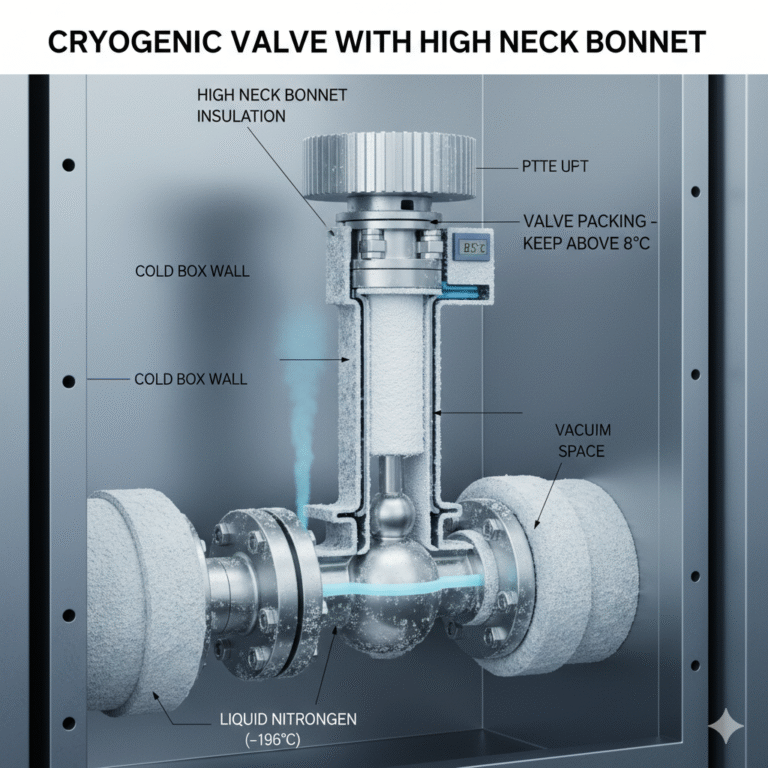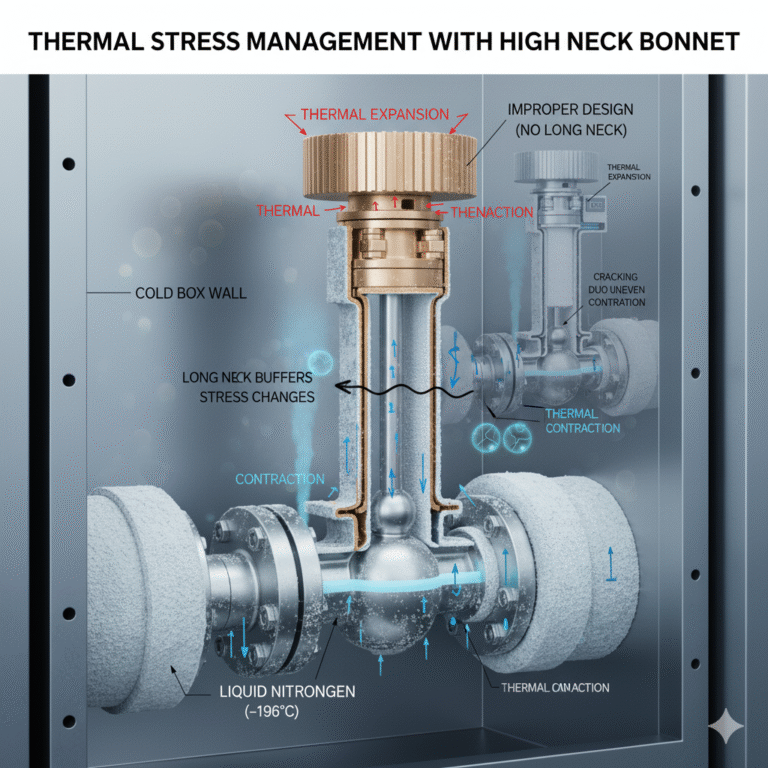Cryogenic valves are widely used in industries dealing with extremely low-temperature media such as liquid oxygen, liquefied natural gas (LNG), and others. These media are not only highly flammable and explosive, but they also vaporize rapidly upon warming, causing a volume expansion of several hundred times, which creates significant safety risks. So, why are high neck valve caps commonly used in these valves? What key issues does this design address? How does it ensure valve sealing and operational stability in extreme cryogenic environments?
Cryogenic Valves: Essential for Low-Temperature Media
Cryogenic valves are designed for temperatures ranging from -40°C to -196°C. These valves typically feature long neck valve caps. Cryogenic valves include various types, such as low-temperature emergency shut-off valves, low-temperature shut-off valves, low-temperature check valves, LNG-specific low-temperature valves, and more. The media they handle, such as ethylene, liquid oxygen, liquid hydrogen, LNG, and liquefied petroleum products, not only pose significant safety hazards due to their explosive nature but also undergo rapid vaporization when warmed, expanding hundreds of times their original volume.

The Importance of High Neck Valve Caps in Cryogenic Valves
1. Protecting the Valve Packing
The packing system’s sealing performance is one of the most crucial aspects of cryogenic valve operation. If the packing leaks, it will compromise the insulation effect and allow cryogenic media to vaporize. At lower temperatures, packing elasticity decreases, leading to a reduction in sealing performance. Media leakage can cause the packing to freeze and affect the valve stem’s movement. The stem movement may cause further damage to the packing, resulting in severe leakage. To ensure stable operation, it is essential to keep the packing temperature above 8°C. High neck valve caps provide a protective layer, preventing the packing from freezing and ensuring reliable sealing in cryogenic conditions.
2. Efficient Insulation to Prevent Heat Infiltration
The long neck structure of the valve cap is also ideal for wrapping insulation materials around the valve. This helps effectively block external heat from entering the valve while minimizing heat loss from the internal cooling energy. This ensures that the cryogenic medium remains stable and within its required low-temperature state.
3. Ease of Maintenance and Quick Replacement
Cryogenic valves are often installed in cold boxes, where both the pipeline and valves are kept at low temperatures. The long neck valve cap allows the valve’s main components to be accessed for quick replacement without disassembling the entire valve body. The valve body is usually welded into the pipeline to minimize leaks from the cold box, ensuring the overall sealing integrity of the system.
4. Buffering Thermal Stress Changes
Materials behave differently at low temperatures, and the thermal expansion coefficients can vary significantly. The long neck valve cap design buffers these stress changes caused by temperature fluctuations, reducing the risk of deformation or sealing failure due to uneven contraction. In cryogenic systems, even a small design difference in the valve can have a direct impact on the safe operation of the entire system.

Conclusion: High Neck Valve Caps Are a Necessity in Cryogenic Conditions
In cryogenic applications, the high neck valve cap is not an optional design choice—it is a critical requirement. The unique features of this design ensure the valve’s sealing reliability, ease of maintenance, and long-term stability under extreme low-temperature conditions.
Thus, for any cryogenic application, the high neck valve cap is essential for the safe and efficient operation of the valve, ensuring that it can withstand the challenges posed by extremely low temperatures.
